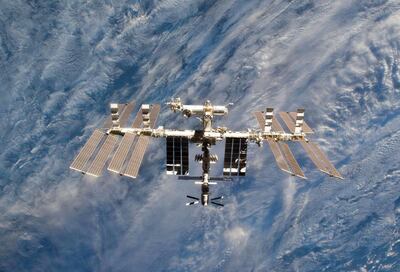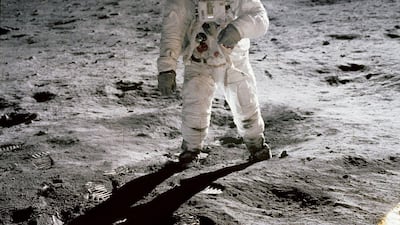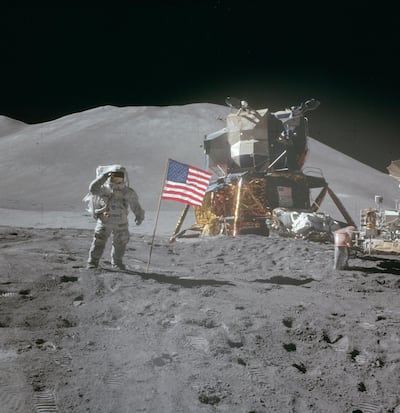When Apollo 11 astronauts Neil Armstrong and “Buzz” Aldrin ended their historic moon-walk exactly 50 years ago this Saturday, many hailed the start of a new era in human exploration.
In reality, it was the start of a half-century of stasis. Even as Apollo 11 flew home, Nasa’s budget was being hacked back. For most American politicians – including President John Kennedy, who had launched the programme in 1961 – the goal had always been to beat the Russians.
The triumph of Apollo 11 had been a brief moment of pride for a nation beset by troubles both home and abroad: civil unrest, inner-city decay and the Vietnam War.
By the time Apollo 17 commander Gene Cernan stepped off the moon for the final time in December 1972, public interest in “moon shots” had evaporated.
But now a new race to return to the moon is underway, and this time it’s not just superpowers who are vying for victory. Private companies are getting in on the act.
Unsurprisingly, Nasa still has the most advanced plans. In May, it unveiled the Artemis programme whose goal is to get astronauts back to the moon by 2024 – just five years from now.
The centrepiece of the project is the Orion spacecraft. The 21st century equivalent of the iconic conical Apollo capsule, it is designed to take four astronauts to the lunar surface.
Propelling Orion there is the task of the prosaically-named Space Launch System (SLS), a launch vehicle as big as the Saturn V booster that took Apollo to the Moon.
So far, so familiar. But the Artemis programme is not just an attempt to rekindle Nasa’s glory days. It’s about using the moon as a stepping-stone to Mars.
So the programme also calls for the construction of a space station orbiting the moon. Known as Gateway, this will be the place where astronauts transfer to a lander for descent to the moon – and one day perhaps begin their long mission to Mars.
Even for Nasa, getting all this built and ready for launch within the next five years is hugely ambitious. Since the end of the Space Shuttle programme in 2011 it has lacked even the means to get astronauts into orbit, let alone to the moon.
The SLS is already behind schedule and over budget, Gateway is barely started and the lander is still stuck on the drawing board.
But the biggest pressure is coming from an unusual source: the White House. After decades of empty rhetoric, the Trump administration has emerged as a champion of space exploration.
Part of the reason seems to be an attempt to rekindle national pride – witness the pointed references to China’s ambitious space programme, which includes building a manned base on the moon by 2030. Russia has similar plans.
Yet Congress seems in no hurry to bankroll what looks suspiciously like a vanity project of a president in search of a legacy. The 2024 deadline coincides with the end of Trump’s second term, should he get one.
Nasa now finds itself caught between a capricious president and an impossibly tight deadline. US Vice President Mike Pence has already put the agency on notice, effectively saying that if it fails to meet the deadline, it can expect serious consequences.

And the strain is showing: earlier this month, Nasa’s head of manned space exploration was ousted following rows over how to meet the deadline.
So if Nasa isn’t up to the job, who is? Once the preserve of superpowers, space exploration has attracted the interest of tech billionaires.
And now one of them has unveiled plans to meet the 2024 deadline: Jeff Bezos, founder of Amazon and the richest person in the world.
In May, Bezos revealed a full-sized mock-up of Blue Moon, a spacecraft he claims is all set to carry astronauts down to the lunar surface.
Exactly how it would get to the moon in the first place remains unclear – prompting rival billionaire and space enthusiast Elon Musk to tweet “Oh, stop teasing, Jeff”.

Yet Bezos’s project could be just what Nasa needs, by providing a lander for its teetering Artemis programme. Musk, meanwhile, is keeping his eyes on a bigger prize, with his SpaceX company developing a booster capable of taking astronauts to Mars.
But while the race to return to the moon is captivating, the rush is disturbing. The two most memorable events of the post-Apollo era are the space shuttle disasters of 1986 and 2003. Both were ultimately the result of putting deadlines and budgets ahead of safety.
Those vying to return to the moon should be given the time and resources to repeat the triumphs of the Apollo era, not the tragedies that followed them.
How Armstrong and Aldrin were nearly stranded on the Moon
Many of the films and documentaries marking the 50th anniversary of the first moon landing have re-told the gripping story of how Neil Armstrong and Buzz Aldrin nearly ran out of fuel and crashed searching for a safe landing-place. Exactly why they were put in harm’s way is less well-known, however.
But the astronauts also faced disaster in leaving the Moon 50 years ago.
As with the landing, Apollo’s engineers had tried to think of everything that could go wrong during take-off. To minimise the risk of engine failure, they had chosen “hypergolic” fuels that ignited simply on contact with each other – thus eliminating the need for an ignition system.
But while preparing for take-off, Aldrin noticed a vital engine circuit-breaker on the control panel had been snapped off. Worse, it wasn’t clear whether it was on or off.
Aldrin informed mission control, then tried to find a solution. He found his pen could press the circuit-breaker in, but it wasn’t clear that was the right thing to do. Fortunately, mission control told him it was, and the Lunar Module left the moon - with Aldrin’s pen jammed into the control-panel.
Had the circuit-breaker needed pulling out rather than pressed in, Armstrong and Aldrin may have ended up stranded on the moon forever.
Decades later it emerged that Nasa had this covered too. Had disaster struck, President Nixon would have broadcast a eulogy composed by the writer William Safire.
It ended: “Others will follow, and surely find their way home. Man’s search will not be denied. But these men were the first, and they will remain the foremost in our hearts. For every human being who looks up at the moon in the nights to come will know that there is some corner of another world that is forever mankind”.
Robert Matthews is Visiting Professor of Science at Aston University, Birmingham, UK


